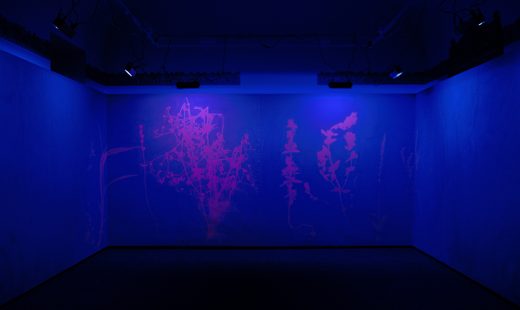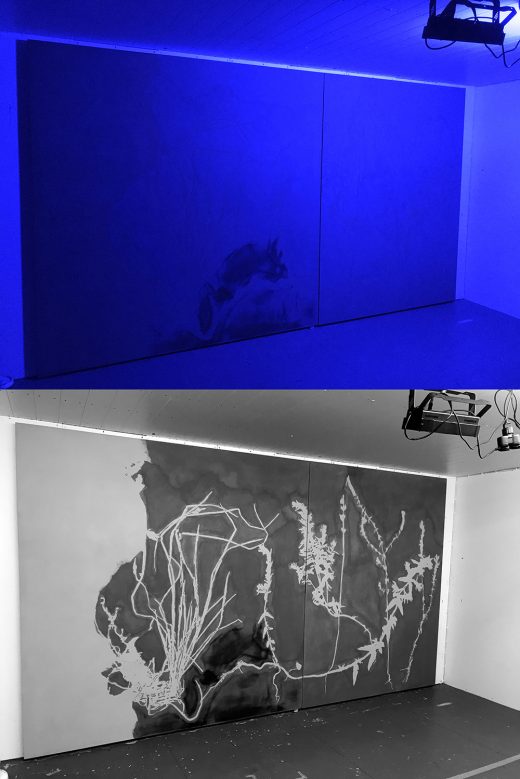Garden of Death, Site-specific installation. Painting with firewood ash and cellulose on canvas, programmed LED light. 2,4 x 22,9 m (size variable).
Spatial installation Garden of Death, bursts of painted silhouettes of plants pulsate on large-scale canvases. The installation is site-specific in many ways: it is made to be variable in size according exhibition space, while its visual elements have their origin in herbaria of extinct plants from the North Karelia area. Intervals of flashing light is based on found recordings of the popping sound of dying plants. I draw attention to how the spiraling surge of mass extinction is not only a phenomenon on a universal scale, but the loss of each species always has local significance.
The workings of the installation are based on interaction of light and physical colour but also on how small changes in certain wavelengths of light can radically affect our perception of colour and with it the way we experience, perceive and interpret the visible world. I would like to challenge the viewer to give some thought to the objectivity of perception and its limited nature in relation to changing reality. What separates the visible from the invisible? What happens in front of our eyes and what takes place only in our minds? Where and what is the intermediate space where an image is both non-existent and existent?
The installation’s name refers partly to Hugo Simberg’s painting “Garden of Death”. Simberg portrays souls as plants that Death cares for and the intermediate space of Death as an otherworldly place where souls go before entering heaven. I think about my installation as a place of strangeness, where “something of the plants’ essence is kept flickering and oscillating as memories until it is no more and disappears completely.”
Material choices of the installation are part of my research as an artist into biodegradable, non-toxic materials that burden the environment as little as possible. Paint for the installation is made using ash from burnt firewood as pigment.


